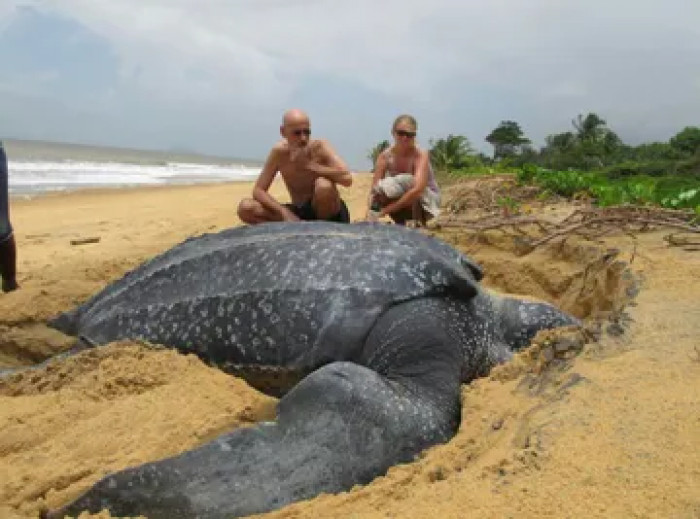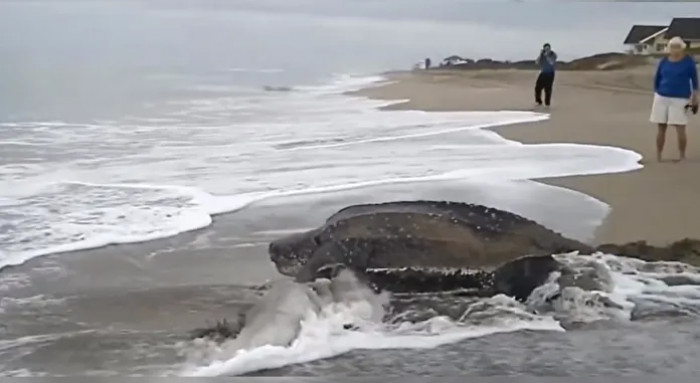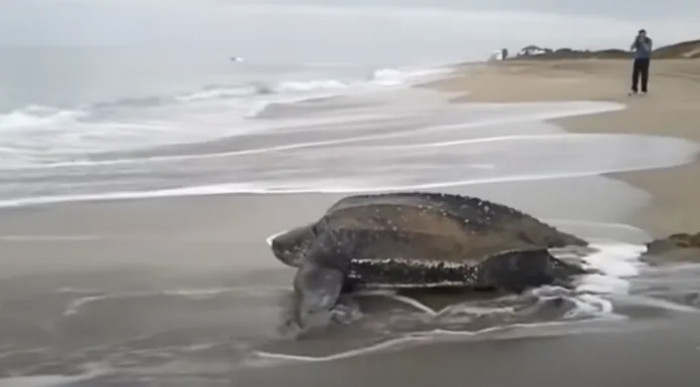Wally, The Emotional Support Alligator, Takes A Trip To The Phillies And Goes Viral

This is truly one of the most uncommon occurrences

In this adorable video footage, a giant leatherback sea turtle emerges from the water and onto a sandy beach. Even though the gorgeous beast just stopped by for a brief rest, it was enough to make everyone gasp.
Even though the location where the video was made is unknown, the two minutes of footage show the largest turtle in the world relaxing on the sand before slipping back into the ocean. One of the beachgoers who saw the exceedingly uncommon occurrence captured the scene on camera.
The leatherback turtle, known as the largest turtle in the world, spends most of its time traveling across the ocean alone. Rarely do they come ashore to rest, as it did in this instance; they only do so to lay their eggs.
The marine researchers from Oceana stated that leatherback turtles spend almost all of their time in the ocean, with females only coming to shore to lay eggs.
"So from the time they hatch and enter the surf, males will never be out of the water again and are therefore more difficult to study than females."
Leatherback turtles can weigh up to 2,000 pounds, but they can travel thousands of kilometers in a lifetime. These enormous turtles, unlike most other species, do not have as strong a shell and it resembles leathery skin, which is likened to their name.
 YouTube Screenshot
YouTube ScreenshotAccording to the Oceana website, "Leatherback turtles are known to travel incredibly long distances during their lifetimes. Throughout its lifetime, a leatherback turtle may cross the ocean several times, traveling to and from preferred feeding or nesting sites."
 YouTube Screenshot
YouTube ScreenshotThe video, which you’ll get to see down below, shows the moment this enormous turtle emerges from the water. The name "leatherback" refers to the leather-like shell that this species of turtle has as opposed to a hard shell like other turtles.
They are one of the most migratory species, traveling across the Atlantic and Pacific Oceans.
 YouTube Screenshot
YouTube ScreenshotEvery summer and fall, Pacific leatherbacks travel from their nesting beaches in the Coral Triangle all the way to the California coast to dine on the abundance of jellyfish. Although they are widely distributed, the number of leatherback turtles has drastically decreased over the past century due to extensive egg collection and bycatch in fisheries.
Although the IUCN lists the leatherback as Vulnerable globally, certain subpopulations (such as those in the Pacific and Southwest Atlantic) are Critically Endangered. The vast amount of jellyfish that leatherback turtles eat contributes to the control of these marine species’ populations.
In coastal towns, marine turtles, notably leatherbacks, are a major source of revenue for ecotourism.





